Wry Neck (Discogenic)
Updated:
(Also known as Torticollis, Discogenic Wry Neck, Acute Wry Neck, Herniated Cervical Disc, Bulging Disc, Herniated Disc, Cervical Disc Bulge, Slipped Disc, Prolapsed Disc, Intervertebral Disc Injury, Sprained Disc, Disc Protrusion)
N.B. Although a wry neck may originate from either the discs or facet joints of the neck, the term ‘wry neck’ will be used in this article to describe a wry neck originating from the disc.
What is a wry neck?
A wry neck is a relatively common condition characterized by a sudden onset of pain and stiffness in the neck or upper back. The injury originates from damage to one of the discs in the neck and results in a noticeable limitation of movement and postural deformity.
The cervical spine (neck) comprises of many bones known as vertebrae, each of which is separated by a disc (figure 1). The disc comprises of many layers of strong connective tissue wrapping around the disc. In the middle of the disc lies a soft jelly-like substance which is capable of changing shape. When this jelly-like substance protrudes from the disc due to a tear in several layers of the connective tissue, this is known as a bulging disc and, if severe enough, can result in a wry neck.
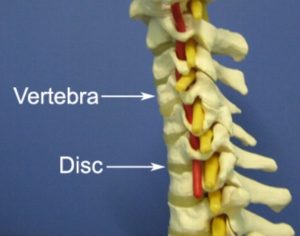
To understand the mechanism of injury in a wry neck, it is useful to liken the disc to a vanilla slice. Imagine a vanilla slice wrapped in five layers of sandwich wrap. The top and bottom layers of pastry represent the vertebra (bones), the custard represents the jelly-like substance of the disc and the sandwich wrap represents the connective tissue around the disc. If you were now to pinch the front of that vanilla slice, you could imagine, the custard would squeeze towards the back of the vanilla slice and may tear two or three layers of sandwich wrap at the back of the vanilla slice. As a result the custard is no longer supported as effectively at the back of the vanilla slice and therefore bulges out at this location. In the disc, the situation is similar. Bending the neck forward closes down the front of the disc, pushing the jelly-like substance within the disc towards the back. Overtime or suddenly, this may tear several layers of connective tissue at the back of the disc resulting in a disc bulge. When this disc bulge results in neck pain, with resultant limitation of movement and postural deformity, it is known as a wry neck.
Causes of a wry neck
A wry neck usually occurs either upon waking in the morning (after a long sleep in an awkward position – figure 2) or due to a specific activity often involving a sudden, quick movement of the neck or heavy lifting. In some cases symptoms may be of gradual onset often related to repetitive or prolonged activities.
There are four main activities in everyday life which may in isolation or combination, contribute to the development of a wry neck provided they are forceful, repetitive or prolonged enough. These include: bending the neck forwards, poor posture (slouching) especially during sleep or sitting (figures 2 & 3), activities using your arms in front of the body (e.g. computer use, washing dishes, driving etc.) and lifting. Twisting or side bending movements of the neck may also contribute to injury by focusing stress on one side of the disc.
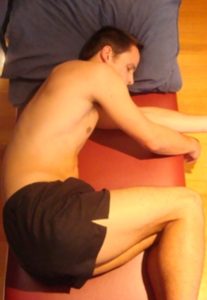
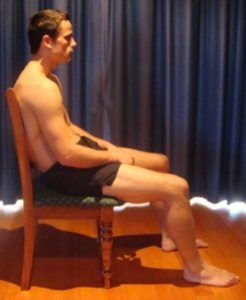
Occasionally, a wry neck may occur following a trivial movement involving bending or twisting of the neck such as picking up a small object, turning the neck (such as when driving) or sneezing. In these instances, the disc has normally been subject to repetitive or prolonged bending, slouching, arms forwards or lifting forces leading up to the incident.
Signs and symptoms of a wry neck
Patients with a wry neck typically experience severe one sided sharp neck pain which is most common in the lower neck region. There is usually significantly restricted neck range of movement, an inability to turn the head to the painful side and often a resultant postural deformity due to pain. The postural deformity is usually positioned with the head held away from the side of pain with the patient unable to correct this due to muscle spasm and pain.
In some cases, symptoms may be felt centrally or on both sides of the neck. The symptoms associated with a wry neck are sometimes accompanied with pain radiating down the arm (sometimes as far as the hand and fingers) or into the shoulder blade region, or in some cases, headaches. Muscle spasm, pins and needles, numbness or weakness may also be present.
Patients with this condition often first notice their symptoms upon waking in the morning (particularly after a long sleep in an awkward position or with an inappropriate pillow). Occasionally there may be a sudden onset of pain during the causative activity. Some patients may notice no identifiable reason as to why the symptoms have started, although a thorough history and examination from the treating physiotherapist will usually be able to identify the likely cause.
The symptoms associated with this condition are often worse with sustained postures such as reading, driving, sitting at a computer or watching television. Symptoms may also be exacerbated by activities using the arms in front of the body (such as cooking, ironing, gardening, vacuuming etc.), prolonged sitting (especially if slouched or in inappropriate chairs such as soft lounge chairs), heavy lifting and certain neck movements involving rotation, side bending, bending forwards or backwards. Sneezing may also aggravate symptoms. Patients with a wry neck will often experience pain that is worse first thing in the morning.
Diagnosis of a wry neck
A thorough subjective and objective examination from a physiotherapist is usually sufficient to diagnose a wry neck. Investigations such as an MRI or CT scan may be required to confirm diagnosis.
Treatment for a wry neck

Members Only ContentBecome a PhysioAdvisor Member to gain full access to this exclusive content. For more details see Become a Member. Already a member? Login Now
Prognosis of a wry neck
In patients who receive appropriate treatment and maintain the perfect balance of activities, the acute symptoms of a wry neck can settle in as little as three days (this usually coincides with relocation of displaced disc material back into its original position). Typically, however, patients will take approximately 2 to 3 weeks for this to occur. Once the disc is ‘in’, the patient should be pain free and have relatively full movement. However, the torn connective tissue at the back of the disc continues to heal from this point. It takes approximately six weeks of consistently keeping the disc ‘in’ to allow the torn tissue to heal to an adequate level (approximately 80% of its original strength) before resumption of full activities can take place. Care must therefore be taken to follow physiotherapy advice, exercises and return to activity instructions during this time.
In some patients with one or more severe disc bulges, or severe degenerative changes in addition to their bulging disc(s), it may not be possible to push the bulging disc back into position. In these cases rehabilitation may be significantly prolonged (lasting many weeks or months).
Contributing factors to the development of a wry neck

Members Only ContentBecome a PhysioAdvisor Member to gain full access to this exclusive content. For more details see Become a Member. Already a member? Login Now
Physiotherapy for a wry neck

Members Only ContentBecome a PhysioAdvisor Member to gain full access to this exclusive content. For more details see Become a Member. Already a member? Login Now
Other intervention for a wry neck
Despite appropriate physiotherapy management, a small percentage of patients with a wry neck fail to improve and may require other intervention. This may include further investigations such as an X-ray, CT scan or MRI, pharmaceutical intervention, corticosteroid injection, assessment from a specialist or in rare cases, surgery. The treating physiotherapist can advise if these interventions may be required and will refer to the appropriate medical authority if it is warranted clinically. In cases of persisting or worsening neurological symptoms (such as pins and needles, numbness and weakness), surgery may be indicated.
Exercises for a wry neck
The following exercises are commonly prescribed to patients with this condition. You should discuss the suitability of these exercises with your physiotherapist prior to beginning them. Generally, they should be performed provided they do not cause or increase symptoms.
Your physiotherapist can advise when it is appropriate to begin the initial exercises and eventually progress to the intermediate and advanced exercises. As a general rule, addition of exercises or progression to more advanced exercises should only take place provided there is no increase in symptoms.
Initial Exercises
Chin Tucks
Begin sitting or standing tall with your back and neck straight, shoulders should be back slightly (figure 7). Tuck your chin in as far as you can go without pain and provided you feel no more than a mild to moderate stretch. Keep your eyes and nose facing forwards. Hold for 2 seconds and repeat 10 times provided there is no increase in symptoms. Repeat 5 times daily.
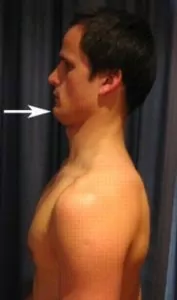
Shoulder Blade Squeezes
Begin sitting or standing tall with your back and neck straight (figure 8). Squeeze your shoulder blades together as far as you can go without pain and provided you feel no more than a mild to moderate stretch. Hold for 5 seconds and repeat 10 times provided there is no increase in symptoms. Repeat 5 times daily.
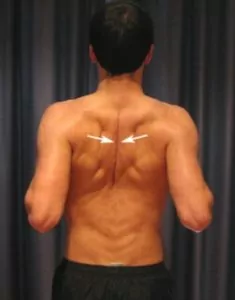
Intermediate Exercises

Members Only ContentBecome a PhysioAdvisor Member to gain full access to this exclusive content. For more details see Become a Member. Already a member? Login Now
Advanced Exercises

Members Only ContentBecome a PhysioAdvisor Member to gain full access to this exclusive content. For more details see Become a Member. Already a member? Login Now
Other Exercises

Members Only ContentBecome a PhysioAdvisor Member to gain full access to this exclusive content. For more details see Become a Member. Already a member? Login Now
Rehabilitation Protocol

Members Only ContentBecome a PhysioAdvisor Member to gain full access to this exclusive content. For more details see Become a Member. Already a member? Login Now
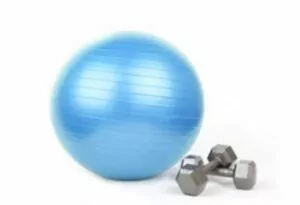 Physiotherapy products for a wry neck
Physiotherapy products for a wry neck
Some of the most commonly recommended products by physiotherapists to hasten healing and speed recovery in patients with this condition include:
-
 Wheat Bags
Wheat Bags -
 OPPO – Posture Aid / Clavicle Brace (OPP2075)
OPPO – Posture Aid / Clavicle Brace (OPP2075) -
 Premium Strapping Tape 38mm (Victor)
Premium Strapping Tape 38mm (Victor) -
 AllCare Pro-TENS Machine
AllCare Pro-TENS Machine -
 AllCare Tubing
AllCare Tubing -
 AllCare Spikey Massage Ball
AllCare Spikey Massage Ball -
 Fixomull Stretch 5cm x 10m
Fixomull Stretch 5cm x 10m -
 AllCare Foam Roller Round
AllCare Foam Roller Round -
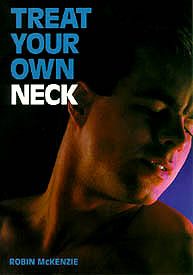 McKenzie Treat Your Own Neck Book
McKenzie Treat Your Own Neck Book -
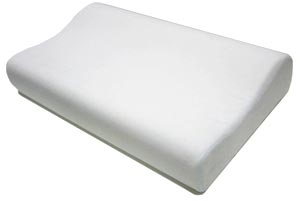 Dentons Impressions Classic Memory Foam Therapeutic Pillow
Dentons Impressions Classic Memory Foam Therapeutic Pillow
To purchase physiotherapy products for a wry neck click on one of the above links or visit the PhysioAdvisor Shop.
 Find a Physio for a wry neck
Find a Physio for a wry neck
Find a physiotherapist in your local area who can treat this condition.
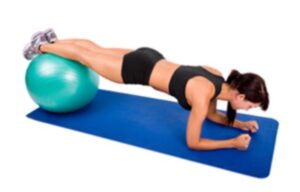 More Exercises
More Exercises
- Neck Stretches.
- Upper Back Stretches .
- Beginner Pilates Exercises.
- Cardiovascular Exercise.
- Core Stability Exercises.
 Recommended Reading
Recommended Reading
- Correct Posture.
- Postural Taping.
- Mobile Phone Ergonomics.
- Ergonomic Computer Setup.
- Correct Lifting
- Ice or Heat
- R.I.C.E. Regime
- Choosing a School Bag.
- Neck Diagnosis Guide.
Become a PhysioAdvisor Member

Link to this Page
If you would like to link to this article on your website, simply copy the code below and add it to your page:
<a href="https://physioadvisor.com.au/injuries/neck-head/wry-neck-discogenic”>Wry Neck (Discogenic) – PhysioAdvisor.com</a><br/>PhysioAdvisor offers detailed physiotherapy information on a wry neck (torticollis) including: causes, symptoms, diagnosis, treatment, exercises, rehabilitation protocol, physiotherapy products and more...
Return to the top of Wry Neck (Discogenic).

